The Pentagon on PLA Modernization Processes
In late November, the Pentagon released a new annual report, "Military and Security Developments Involving The People's Republic of China", dedicated to China's defense potential, its military policy, and so on. One of the main topics of the report is the current process of deep modernization of the People's Liberation Army of China. The main goals and objectives set by the country's leadership, as well as the current renewal processes and the results already obtained are considered.
Main goals
The first chapter of the report, "Understanding China's Strategy", provides information on Beijing's main goals and objectives in various fields. Attention is paid to domestic and foreign policy, economic strategy, etc. At the same time, the military plans listed in the "Defense Policy & Military Strategy" section are of the greatest interest.
According to the 2019 White Paper, the PLA and related structures have several main tasks. These are containment and response to the aggression of a potential enemy, ensuring national security and territorial integrity, “showing the flag” and protecting the interests of the country in remote regions, etc. At the same time, the army must work and solve problems in all environments, including space, the electromagnetic spectrum and cyberspace.
A major program for the modernization of the armed forces, designed for several decades, has been drawn up, adopted and is being implemented. For greater convenience of execution, it is divided into several periods. If necessary, the program is supplemented or corrected. Thus, the Pentagon report notes that in 2020 and 2021. Beijing has announced new targets of one sort or another.
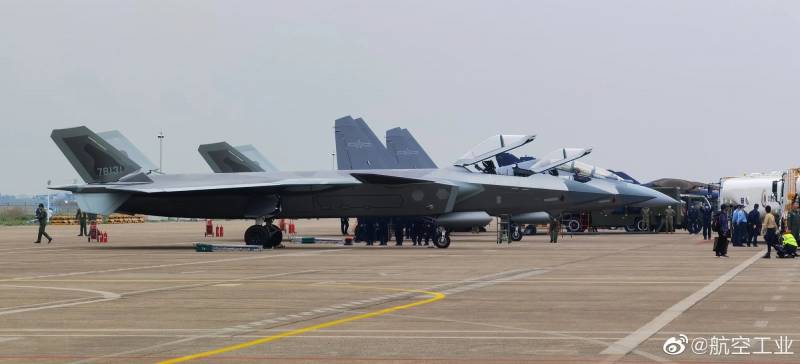
Modern aviation equipment of the PLA Air Force at the Airshow China 2022 exhibition. Photo by Thedrive.com
In general, China uses an "active defense" strategy. Depending on the circumstances and various factors, he plans to protect his interests in different ways. Despite all the new proposals, this aspect of the defense is not changed or revised.
On time
In 2020, a new task was set. Until 2027, it is required to increase the degree of mechanization and informatization of the army. It is necessary to develop not only new weapons and equipment, but also promising means of reconnaissance, command and control, communications and control. It is assumed that such developments will improve the overall combat capability of the PLA.
In this context, since 2021, the development and implementation of a fundamentally new concept of warfare has been discussed. The idea of "high-precision operations in various environments" provides for the development of network-centric technologies and the growth of the potential of both real forces and means, and cyberspace systems.
The Pentagon believes that such concepts can really improve the potential of the PLA in confrontation with potential adversaries. They are proposed to be considered in the light of a hypothetical Taiwanese military operation and in the context of developing competition with the United States.
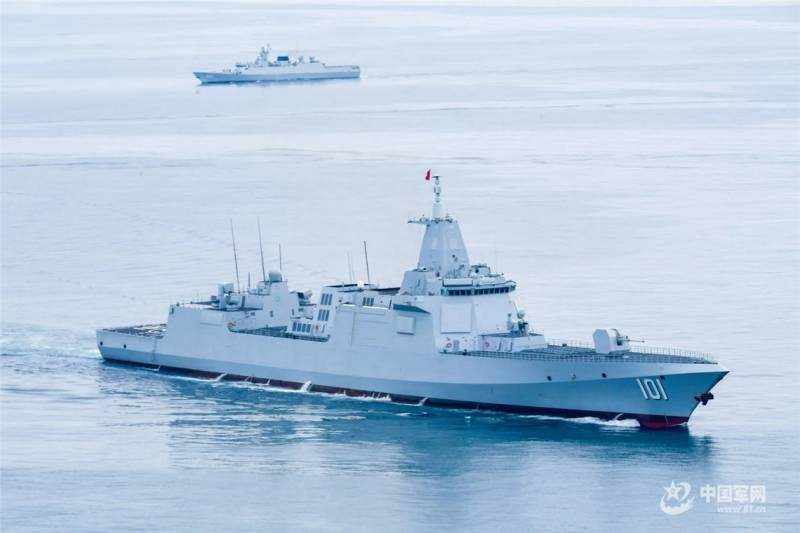
Destroyer pr. "055". Photo 81.cn
After 2027, new stages of modernization are expected to be launched. In general, plans for the renewal of the PLA are drawn up for the next three decades. As a result of all future activities, the Chinese armed forces should become a world-class army. They want to get this result by 2049 - by the centenary of the PRC.
Nuclear forces
The development of strategic nuclear forces occupies a special place in the modernization processes of the PLA. Information on this is provided in Chapter 2, China's Forces, Capabilities, And Power Projection. The Pentagon was able to find out that the most active work is taking place in this area, and the indicators of Chinese strategic nuclear forces have recently increased significantly. At the same time, further improvement in quantitative and qualitative terms is expected.
In the recent past, American experts assumed that the PLA strategic nuclear forces had about 200 nuclear warheads. A new Pentagon report says that in 2021 their number exceeded 400 units. Production continues, and by 2035 it is expected to overcome the mark of 1500 items. All this will have a positive impact on deterrence and retaliation capabilities.
In parallel, the means of delivery are developing. The development of complexes for various purposes with ballistic missiles is underway. IRBMs and ICBMs are deployed on fixed and mobile launchers. The armament of the naval component of the strategic nuclear forces is also being modernized. The existing H-6 bomber remains the main air carrier, but promising equipment is being developed, as well as new types of aircraft weapons.
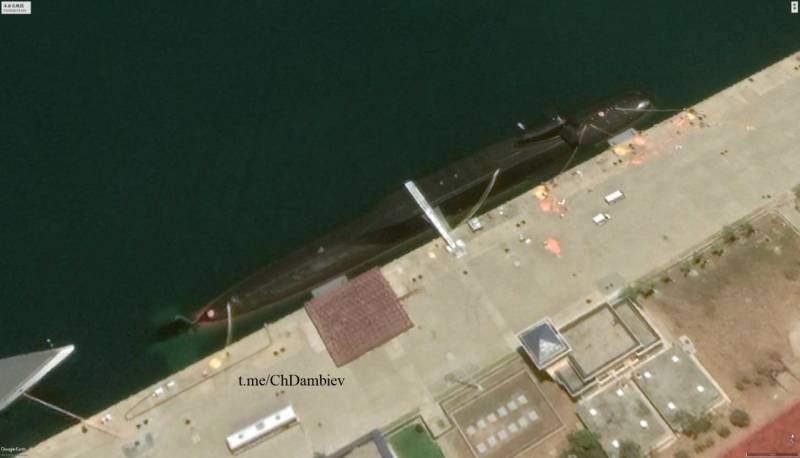
Strategic submarine "Type 094". Photo Telegram / ChDambiev
According to a Pentagon report, the PLA has about 300 nuclear-armed ICBMs in its land-based missile units. The Navy can deploy up to 72 missiles on the six existing SSBNs. The quantitative aspects of long-range aviation are not specified.
Nuclear forces could be replenished with hypersonic weapons. The authors of the report recalled the creation and adoption of the DF-17 missile system with a hypersonic gliding warhead. It is assumed that the latter is capable of carrying both conventional and special charges.
conventional weapons
The development and modernization of the conventional forces of the PLA also continues. The Pentagon report pays special attention to the development of the naval forces - in connection with their importance for the defense of China and with the impact on the military-political situation in the Pacific region. There is an increase in current indicators fleet and the presence of very bold plans.
At the moment, the PLA Navy is the largest fleet in the world. They contain approx. 340 pennants of all classes. Of these, 125 are combat units of the main classes, such as submarines and medium or large surface ships. In terms of combat capabilities, the Chinese Navy in the future will be able to compare with the US.
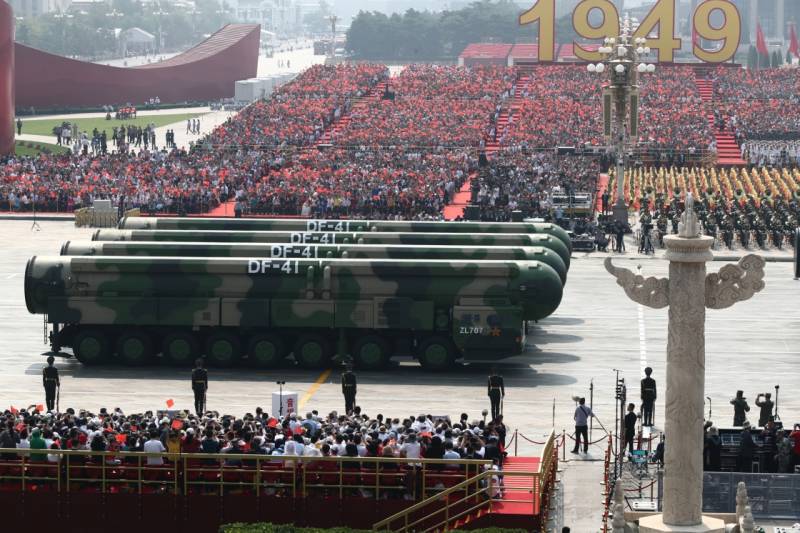
Missile systems DF-41 with ICBMs. Photo 81.cn
China does not stop there and plans to continue construction. By 2025, the strength of the Navy will be increased to 400 units, and by 2030 there will be 440 ships and vessels in service. Not all new pennants will be large warships, but in this case, the potential of the fleet should grow along with the size.
The ground forces continue to be the largest structure in the PLA and its main force, and their modernization has already begun. At this stage, it provides for the re-equipment of units due to modern platforms, weapons and equipment. At the same time, fundamental changes or innovations are not yet planned.
The situation is similar with combat aviation from the Air Force and Navy of the PLA. The production and supply of already known models of equipment and weapons continues. Also, aviation units receive the latest generation equipment, and in parallel, new aircraft and helicopters with improved characteristics and capabilities are being developed. Of particular interest is the promising H-20 strategic bomber, which will make it possible to rebuild the air component of the strategic nuclear forces.
International rivalry
Thus, the PRC continues to modernize its armed forces and is doing everything necessary to increase their performance. At the same time, the development strategy is based on qualitative improvements without major changes in numbers. New ideas and concepts are being created and implemented, as well as promising models of various kinds are being developed, built and mastered in the troops.
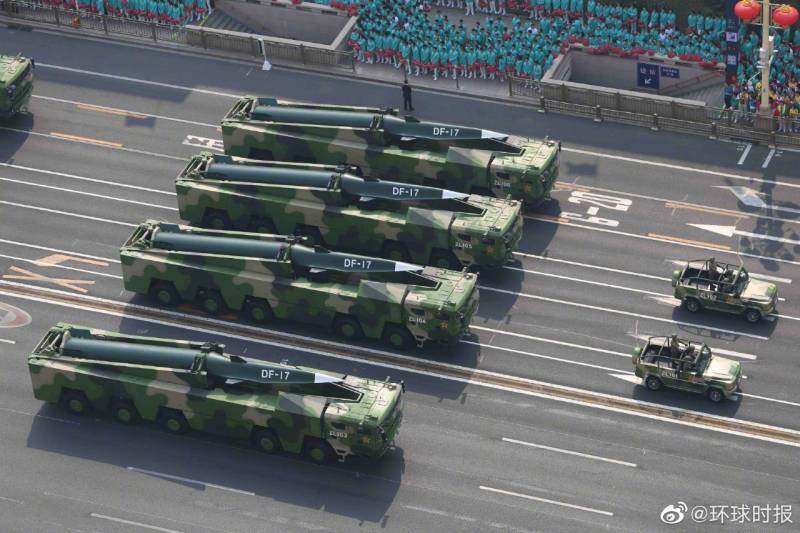
Missile systems with hypersonic equipment DF-17. Photo Telegram / Vatfor
To date, the PLA has reached a fairly high level and is capable of solving various tasks both on the borders of China and at a distance from them. At the same time, plans have been drawn up for several decades ahead, and, as they are implemented, the capabilities of the army will grow, and the areas of responsibility will expand.
Already in its current form, the PLA is a serious competitor to foreign armies - and forces foreign states to take the necessary measures. Thus, in the recently updated US National Defense Strategy, it is China that is named the main competitor in the long term. It is obvious that the further improvement of the Chinese army will only exacerbate this situation.
However, China is already preparing for such a development. The modernization of the PLA is carried out not only to expand the zones of influence and strengthen the positions of Beijing in the region, but also to counter potential adversaries, primarily the United States. At the same time, development plans are scheduled for several decades ahead, and their first results can be observed even now.
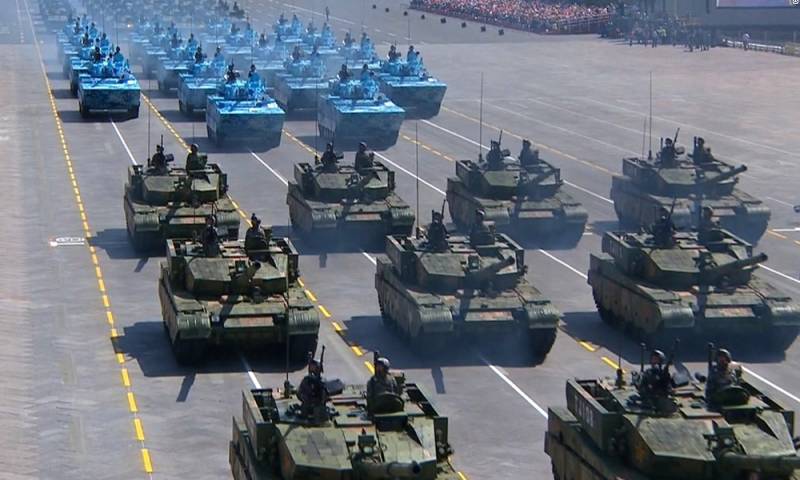
Information